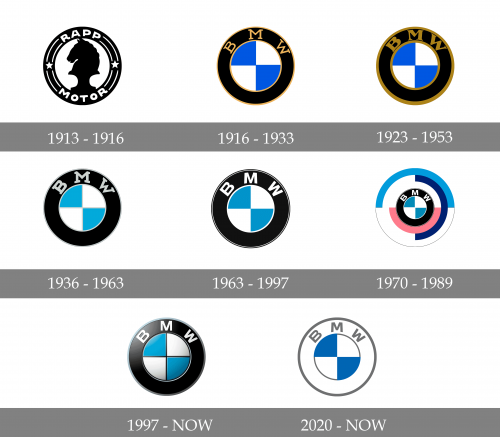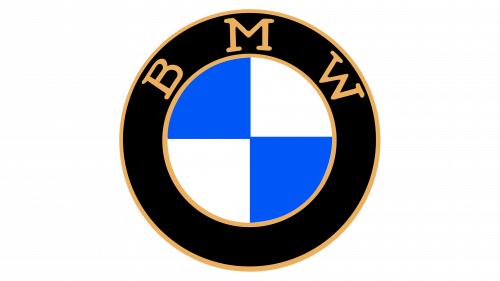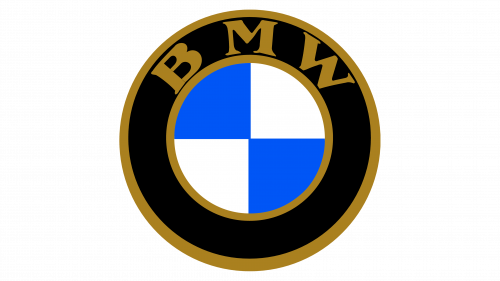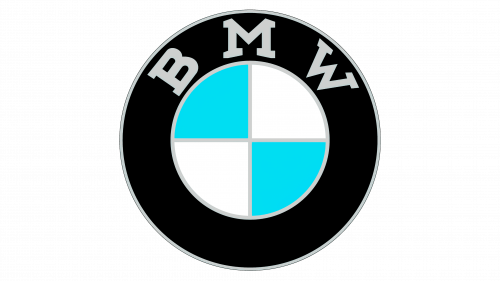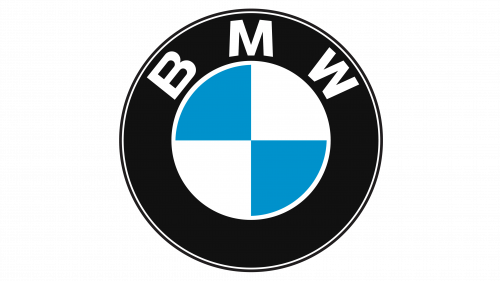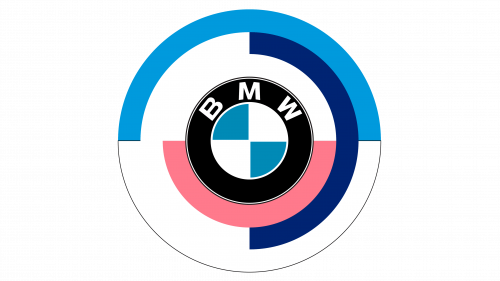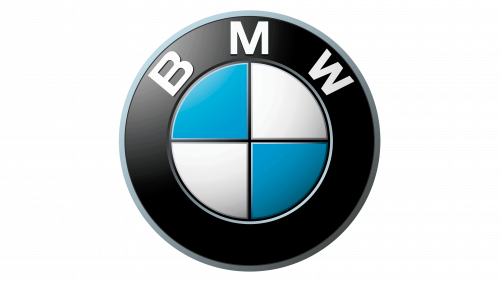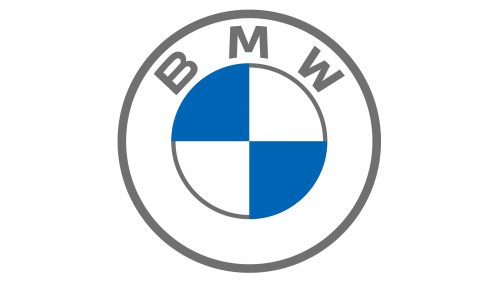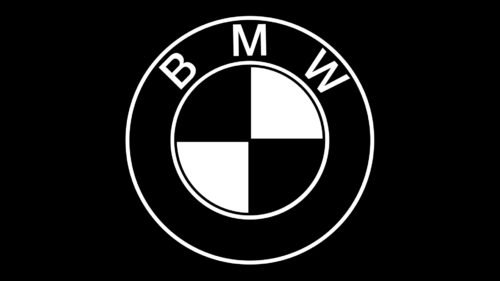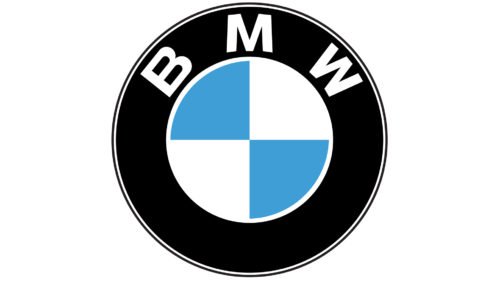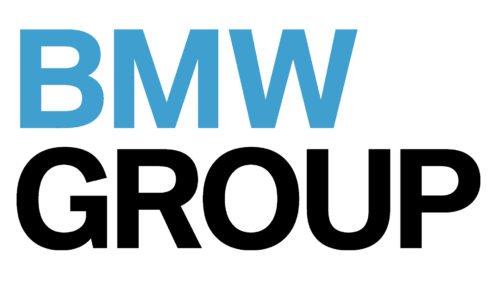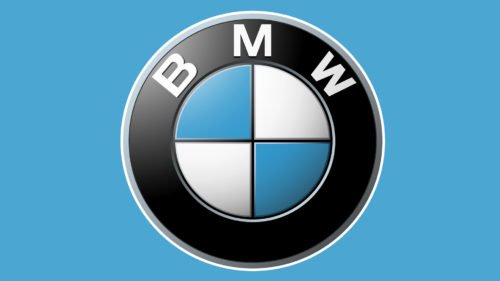The legendary German car brand BMW is associated with the speed available to everyone. These are cars produced serially but with all the signs of elite transport. The company has existed since 1916, and during the World War, it was famous for the supply of motorcycles and aircraft engines for the German army. Already a year after the company was founded, in 1917, the first version of the famous BMW logo appeared a circular emblem resembling both a wheel and a propeller. The iconic logo has been a hot topic of discussion for many years. And all because of a publicity stunt, where a propeller was depicted in the background of an airplane.
Meaning and history
Bayerische Motoren Werke AG, universally known as BMW, was founded by Franz Josef Popp, Karl Rapp, and Camillo Castiglioni in 1916. Initially, the company was established to manufacture aircraft engines, which it did from 1917 until 1918 and again from 1933 to 1945. The company’s shift from aircraft engines to motorcycle and automobile production marked a significant pivot in its history, setting the stage for BMW to become a prominent name in luxury vehicles and motorcycles. The company name, BMW, and the iconic company logo, which is commonly misconstrued as a stylized propeller, were inspired by the company’s early involvement in aviation. Historians have clarified that the logo represents the Bavarian flag’s colors, blue and white, arranged in inverse order, challenging the common narrative that it depicts rotating airscrews.
Throughout the 20th century, BMW achieved remarkable milestones that solidified its status in the automotive industry. In the 1970s, under the guidance of exterior designer Paul Bracq and interior designer Wolfgang Seehaus, BMW introduced a series of sporty sedans that redefined the luxury car market. The creation of the BMW M GmbH subsidiary in 1972, initially to support the company’s racing program, led to the development of high-performance models such as the M1, crafted by the renowned designer Giorgetto Giugiaro. This period also saw the introduction of the BMW 3 Series, which became a benchmark for the compact executive car segment. BMW’s commitment to innovation was further demonstrated in collaborations with Pratt & Whitney for engine development and the adoption of new content in advertising, spearheaded by external graphic designer Pierre Mendell, showcasing BMW’s blend of luxury and performance.
Today, BMW stands as a global leader in the production of premium vehicles and motorcycles, embracing trends in electrification, digitalization, and sustainable mobility. The company’s current position is significantly influenced by the leadership of Jens Thiemer, the VP of Customer and Brand, who emphasizes the importance of adapting to a rapidly changing market. BMW’s new brand design, unveiled in March 2020, reflects a shift towards a more digital and customer-centric approach, with a focus on a wide variety of contact points in the digital and physical worlds. The reimagined brand identity and commercial logos aim to connect more deeply with a younger demographic, demonstrating BMW’s ongoing evolution while staying true to its heritage. BMW’s commitment to innovation, exemplified by its investments in electric vehicles and autonomous driving technology, continues to shape the future of mobility, ensuring the company’s relevance and leadership in the automotive industry for years to come.
The first car, released under the BMW brand, was called Dixi (Latin – “I said”, “I said everything”). This is how the ancient Roman philosophers finished their monologues. Indeed, the high-speed compact car Dixi became a new word in the automotive industry, setting a record speed of 1920-1930-ies.
One version of the logo design appeals to the flag of Bavaria as the main object of this logo (on the flag alternate blue and white rhombuses). And really, why not consider this version?
1913 – 1916
The RAPP logo, designed in 1913 was composed of a circular medallion with a thick black framing, where two delicate white stripes and two white stars were placed, separating the “RAPP MOTOR” wordmark in all capitals.
Inside the circle, there was a black horse silhouette in profile. The chess knight figurine was turned to the left.
1916 – 1933
The first version of the iconic blue and white checkered insignia was designed in 1916. It featured a thick black framing with a thin gold outline and “BMW” letters in a rounded serif typeface arched along its upper part.
The inner-circle was composed of a bright blue and white pattern, resembling of the plane’s propeller, and representing the company’s value of its legacy and roots.
The choice of colors is pretty easy to explain — blue and white is the official palette of the Bavarian Flag.
1923 – 1953
In 1923 the logo was modified and modernized: the contours were cleaned and made bolder. Now the framing became even thicker than it used to be due to the enlargement of the Golden outline.
As for the main change, it was definitely the typeface of the gold “BMW” lettering, which became sleeker and chicer now with smooth bold serif lines.
1936 – 1963
Gold was replaced by silver in 1936. As for the main blue and white pattern, it became lighter, and now the logo looked fresh, resembling something ice-cold. The black outline became a little more delicate due to the thin silver outline.
The gray lettering was now executed in a sharp straight serif font with distinct cuts and edges, reflecting a powerful and progressive brand. This logo stayed with the company for almost 30 years.
1963 – 1997
The contours of the badge were refined in 1963. The logo got a perfectly balanced modern look, and the color palette became a bit more intense and calm.
The “BMW” wordmark was now executed in white sans-serif font with clear looks lines, reflecting authority and value of quality and style.
The silver outline of the framing was also replaced by thin white lines, making the emblem flat, yet modern and very strong.
1970 – 1989
The additional logo version was designed for the famous German automaker in 1970 — it was a bright and colorful badge, where the official emblem from 1963 was placed in the middle of a bigger circle, composed of thick lines in different shades of blue, white and pink.
1997 – Today
The most recognizable and distinct logo for BMW was created in 1997 and remained to be official until 2020. But even after the introduction of the new design in 2020, the previous badge still stays on the bonnets of the iconic German autos.
The version of 1997 is composed of a three-dimensional circle with a thick black frame in a silver-gray outline and white sand-serif nameplate. The inner blue and white patterns now have black lines, separating the propeller’s segments from each other. This makes the logo look strict yet contemporary and professional.
2020 – Today
In 2020 the company goes minimalist and redraws its logo in a 2D way, removing the black color. Now the circle with blue and white checkers boasts a thin gray outline and a thick white frame, where the gray “BMW” inscription in a modern slightly extended typeface is placed.
The logo looks fresh and cool, reflecting the progress of the brand and its willingness to move to the new era.
Symbol
The symbolism of the BMW emblem, as interpreted by historians like Fred Jakobs of BMW Group Classic, transcends its apparent representation of a spinning airplane propeller. This emblem, a visual narrative of BMW’s journey from an aircraft engine news provider to a titan of the automotive industry, also encapsulates the strategic prowess reminiscent of a chess game. Such strategic thinking, akin to the symbols of sovereignty and the opportunities of digitization, allowed BMW to navigate the tumultuous waters of the 20th century, outplaying competitors and emerging victorious against the backdrop of global conflict. The emblem, thus, is not just a badge or a BMW badge but a storied symbol that encapsulates the essence of the BMW M Motorsport and the entirety of the BMW world, including its adherence to local trademark law and its registration with the German Imperial Register of Trademarks.
Emblem
The emblem of BMW, a marque synonymous with innovative mobility and a rich tapestry of history, stands as a beacon of myth and legend in the automotive world. Throughout its existence, the emblem—a circle bisected into quarters by a “chess” pattern with a black contour—has been a constant, symbolizing the brand’s dedication to preserving its illustrious past while steering towards the future with little effort. The emblem, often mistaken for a rotating propeller, harks back to BMW’s origins as an aircraft engine manufacturer for the German air force, a nod to the high rpms and the clarity of the skies it once conquered. This legendary logo, with its roots deeply embedded in the Bavarian flag’s colors and BMW’s home city of Munich, Germany, remains unchanged in form but ever-evolving in meaning, embodying the brand’s resilience and commitment to excellence.
Font
The font used in the BMW emblem has journeyed through time, from its inception with gold lines and serifs to its current iteration, which exudes visual restraint and sophistication. The transformation from a thin, serif font to a bold, golden inscription was a significant leap, symbolizing the brand’s ambition and the clarity of its vision. As the times changed, so did the font, eventually adopting a uniform thickness and transitioning to a white (silver) color, echoing the colors of the Bavarian flag and the purity of BMW’s design ethos. This evolution reflects the brand’s adaptability and its pursuit of innovative mobility, with the white (silver) font now considered a classic hallmark of BMW’s identity, emblematic of the brand’s name BMW and its essence as captured by the interior and exterior designers, including collaborations with renowned design studio Italdesign.
What does the BMW logo stand for?
The iconic BMW logo, executed in the official colors of the Bavaria region, depicts a stylized geometric image, which resembles an airplane propeller. At the beginning of its history, the company was specialized in propelled manufacturing, and the link to the brand’s legacy is still kept in the logo.
Color
The choice of color for the BMW emblem, primarily the blue and white hues, is steeped in tradition, directly reflecting the Bavarian flag’s colors and symbolizing the brand’s origins in Munich, Germany. These colors, while constant, have seen variations in saturation and tone, mirroring BMW’s journey through time and its response to the changing tastes of car aficionados. The font color’s transition from gold to white (silver) in the 1930s was a pivotal moment, marking BMW’s intent to broaden its appeal and make its vehicles more accessible to the middle class. This shift not only highlighted BMW’s adaptability but also underscored its commitment to innovation, as seen in the introduction of the new transparent variant of the emblem and the adoption of the M logo. Through these colors, BMW communicates its legacy, its innovations in mobility, and its vision for the future, making each emblem a canvas where the past and the promise of tomorrow blend seamlessly.



